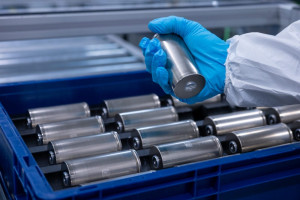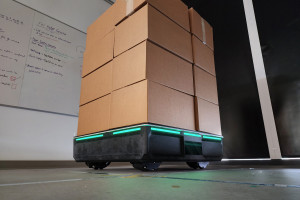Volkswagen subsidiary PowerCo has officially brought its Salzgitter gigafactory in Germany online, commencing production of its first Unified battery cells manufactured in Europe. According to Volkswagen, this marks the first time the Group has designed, developed, and produced battery cells entirely within Europe. The newly produced cells will be supplied to Volkswagen Group brands for final road testing, with initial deployment planned for next year in the Electric Urban Car Family, including models from Volkswagen, ŠKODA, and SEAT/CUPRA.
News
Siemens and nVent are partnering to develop a liquid cooling and power reference architecture specifically designed for hyperscale AI workloads. The modular blueprint is intended to help data center operators deploy AI infrastructure more quickly, intelligently, and sustainably. The joint reference architecture is designed to support 100 MW hyperscale AI data centers capable of housing large-scale, liquid-cooled AI platforms such as NVIDIA DGX SuperPOD with DGX GB200 systems.
Automotive Expo & B2B Meetings is an international event dedicated to automotive professionals, buyers and suppliers.
The BMW Group and Encory GmbH have officially commissioned the new Cell Recycling Competence Center (CRCC) in Salching, Lower Bavaria. This milestone marks a significant advance in the joint implementation of an innovative direct recycling process. For both the construction and operation of the new facility, BMW Group and Encory are working closely with regional partners.
Energy Connect Expo & B2B Meetings is a leading B2B energy trade fair in Romania, focused on advancing business partnerships and showcasing energy-efficiency equipment and solutions. The event brings together buyers, suppliers, and sub-suppliers to connect, collaborate, and explore new opportunities.
The Italian energy company Heliopolis, headquartered in Milan and operating offices in Timișoara and Bucharest, has unveiled plans for a large-scale hybrid photovoltaic and battery storage project in southeastern Romania, with a total capacity exceeding 400 MW and nearly 1,000 MWh of energy storage. The development comprises four hybrid plants with a combined installed capacity of 307 MWp of photovoltaic power and 224 MW / 976 MWh of battery storage.
Logic Robotics, a provider of autonomous, data-driven logistics technologies, has launched its new “Logic Pallet,” calling it the world’s first mobile robot engineered specifically for multifacility operations and built to elevate logistics and material-handling performance across industries. The Logic Pallet is intended to automate and standardize the movement of goods both within and between sites, enabling true end-to-end automation and supporting a fully autonomous, data-driven, and sustainable global supply chain.







